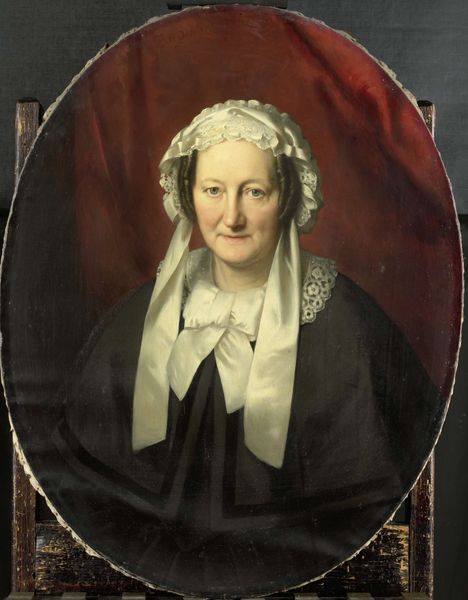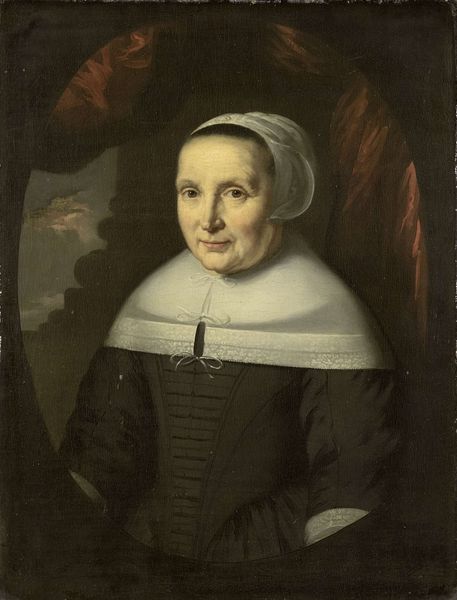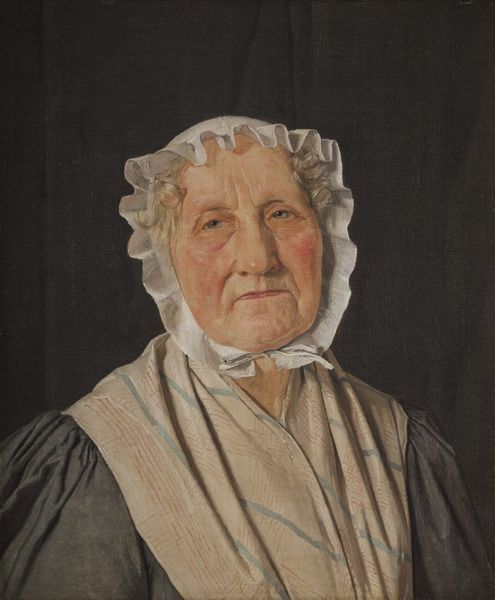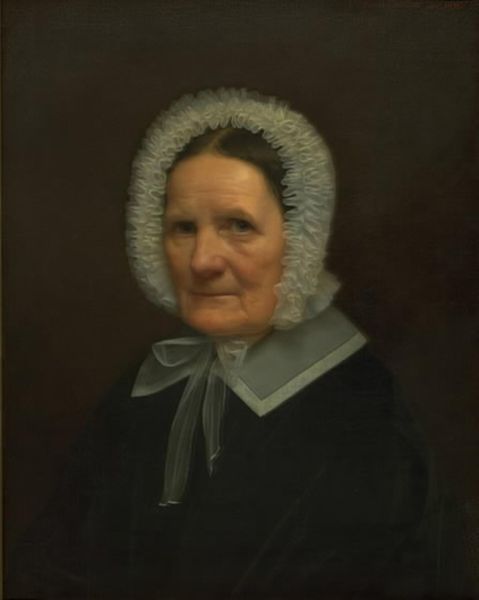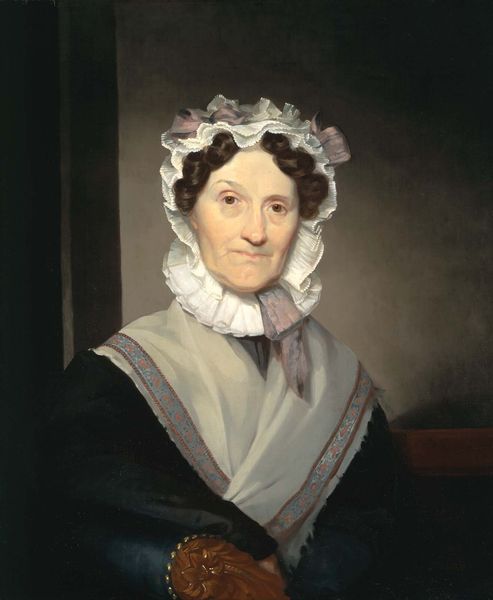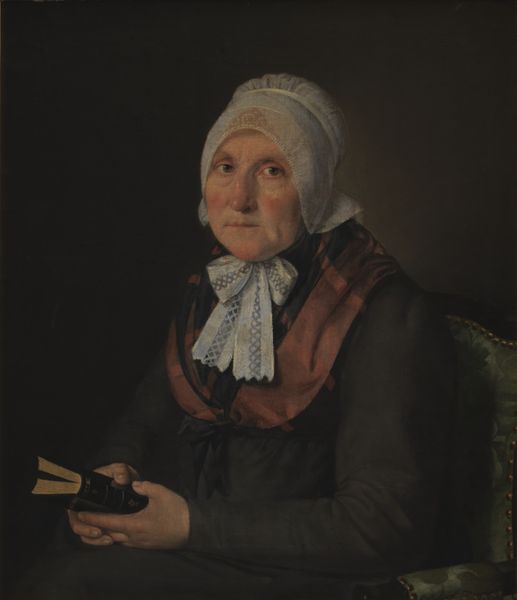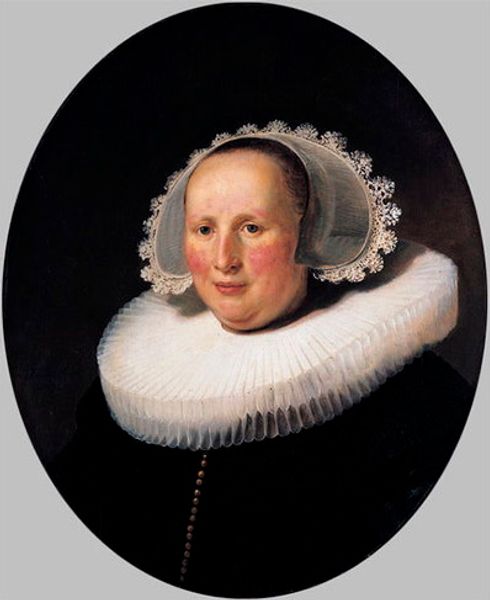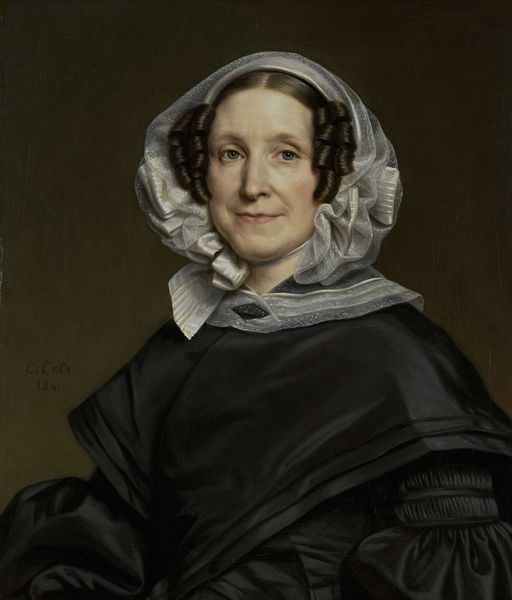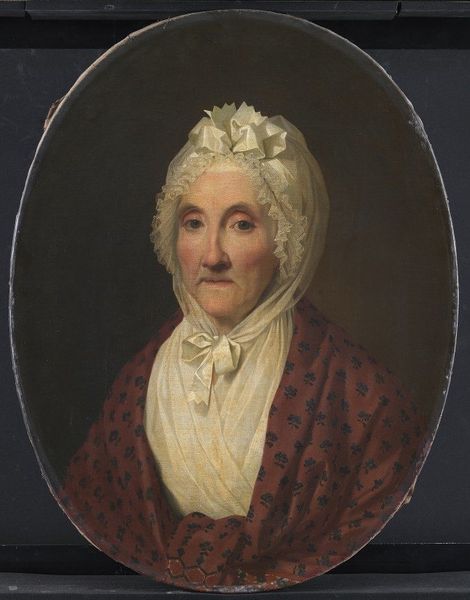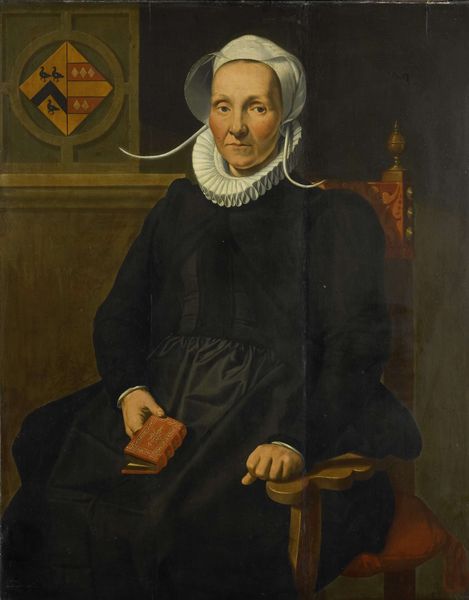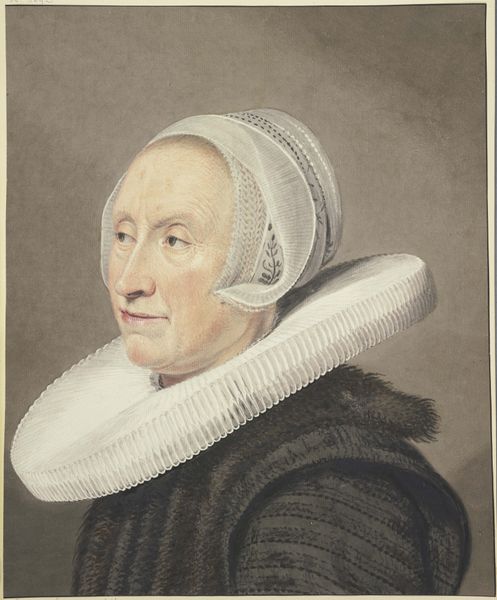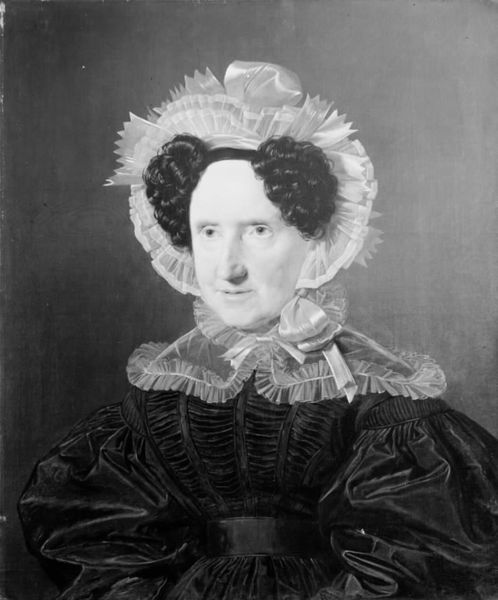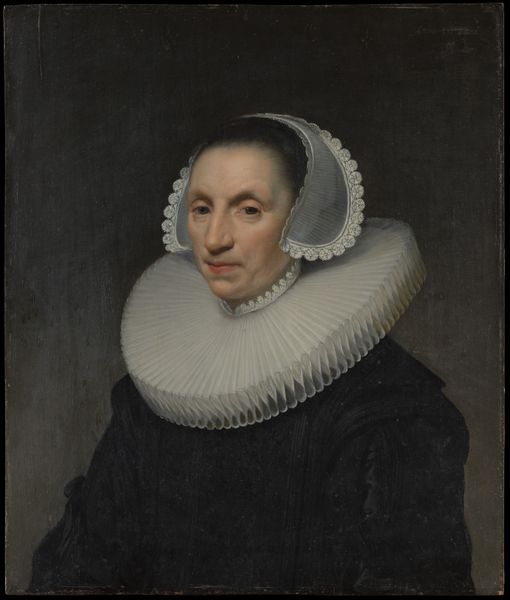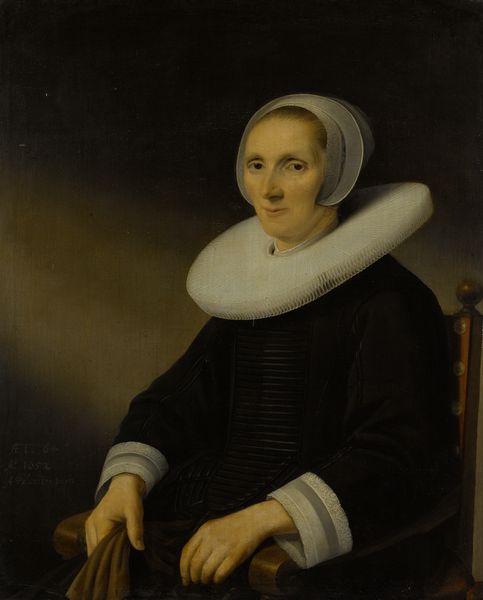
Juliane Dorothea Købke, née Ratz, the Artist's Mother-in-Law 1843 - 1846
0:00
0:00
painting, oil-paint, canvas
#
portrait
#
painting
#
oil-paint
#
canvas
#
romanticism
#
academic-art
Dimensions: 35.5 cm (height) x 27.5 cm (width) (Netto)
Curator: Christen Købke painted this portrait of his mother-in-law, Juliane Dorothea Købke, née Ratz, between 1843 and 1846. It is currently held at the SMK, the National Gallery of Denmark. What are your initial impressions? Editor: Stark! The materiality is almost severe. Look at the palpable contrast between the dark fabric and the delicacy of that lace. It speaks to the labor inherent in its production. I am curious to learn more about this contrast. Curator: Indeed! Social and historical context is key here. Juliane was of the rising bourgeois, and the rigid formality, I argue, showcases an era grappling with shifting social structures and codes. The attention given to the lace is interesting given societal expectations. Editor: Absolutely. How much time was put into this labor of love? It had to be women, largely unpaid and undervalued. The painting seems to memorialize both a specific person and a whole network of female craftsmanship and social expectation. Curator: Certainly. Moreover, how Juliane's positioning represents a shift in the female experience of that time. Note how the clothing signals a kind of bourgeois humility—not outwardly flaunting wealth but possessing it quietly. We can explore class and gender roles within it. Editor: Right. Oil on canvas, yet the illusion suggests other textural relationships at play—think about those artisans painstakingly producing yards of lace by hand. Also, look at how the dark backdrop seems to push Juliane into the viewer's space. Is this an effort to put us closer to her realities? Curator: A key query, I think! It speaks to broader concerns about the relationship between artist, sitter, and viewer, touching on intimacy and the gaze in nineteenth-century portraiture. Editor: In seeing Juliane Dorothea Ratz through Köbke's skilled hands and material choices, I also feel connected to the uncelebrated makers behind the collar. This connects what's visible to a whole economic system that otherwise remains obscured. Curator: Absolutely! It demonstrates, for me, the confluence of individual expression and societal dynamics, underlining how portraits reveal social power at play. Editor: And to think: all of this is so neatly captured with just paint on a piece of canvas. Amazing!
Comments
No comments
Be the first to comment and join the conversation on the ultimate creative platform.
